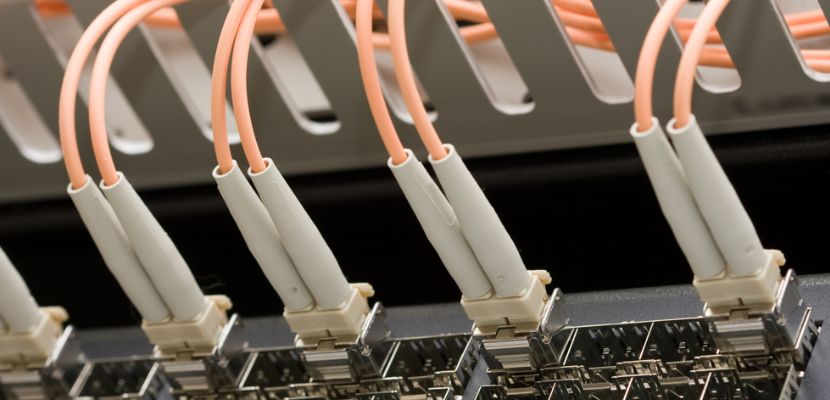The IEEE 1394 port is a serial bus interface standard for high-speed communications and isochronous real time data transfer. Known under several names including FireWire (Apple), i.LINK (Sony), and Lynx (Texas Instruments), this interface directly connects peripheral devices to a computer or to each other.
The standard was developed by Apple in the late 1980s and early 1990s but later transferred to the Institute of Electrical and Electronics Engineers (IEEE) for refinement and publication.

History and Development of IEEE 1394
The concept of IEEE 1394 began at Apple Inc. in the late 1990s as a project to create a high-speed serial bus for connecting peripheral devices to computers. Apple’s vision was to create a protocol that not only facilitated high-speed data transfer but also supported real time data for audio and video devices. Officially adopted in 1995 as IEEE Std 1384-1995, the standard initially supported speeds of 100, 200, and 400 Mbps.
Subsequent enhancements through IEEE 1394a and IEEE 1394b iterations introduced in 2000 and 2002, respectively, significantly enhanced the standard’s capabilities. The updates improved data transfer rates (eventually reaching 3.2 Gbps), extended cable lengths, and introduced support for optical fiber communications. The technology saw widespread adoption across a range of devices, from PCs to digital cameras and audio-visual equipment. Brands like Apple’s FireWire and Sony’s i.LINK popularized IEEE 1394, making it a preferred choice for a variety of applications.
However, the ascent of USB 2.0 and later USB 3.0, with their competitive speeds, broader industry support, and lower costs, began to overshadow IEEE 1394’s dominance in the early 2000s. Despite this shift, IEEE 1394 has maintained its relevance in specialized areas, particularly in professional audio and video production, where its isochronous data transfer capabilities are unmatched.
IEE 1394 Specifications and Features
The IEEE 1394 standard encompasses several specifications and features designed to facilitate high-speed data transfer and real time communications between devices. Over its development, the standard has seen multiple iterations, each bringing speed, connectivity, and functionality enhancements. Here's an overview of the key specifications and features across its versions.
IEEE 1394-1995 (Original Standard)
- Supported data transfer rates of 100, 200, and 400 Mbps.
- Allowed daisy-chaining of up to 63 devices without requiring terminators or complex setup procedures.
- Supported cable lengths up to 4.5 meters.
- Enabled devices to be connected or disconnected without turning off the computer or device (i.e., hot swapping).
IEEE 1394a-2000
- Retained the original speed tiers.
- Enhanced isochronous transfer capabilities, making it more reliable for audio and video applications.
- Introduced new power management features.
- Extended cable length support and introduced additional port types for greater flexibility.
- Ensured backward compatibility with the original IEEE 1394-1995 devices.
IEEE 1394b-2002
- Boosted data transfer rates to 800 Mbps, with provisions for future increases up to 3.2 Gbps.
- Introduced support for various types of cabling, including optical fiber, which allowed for much longer distances (up to 100 meters) between connected devices.
- Introduced a new mode for faster data transfer, known as beta mode, while maintaining compatibility with the original standard through a legacy mode.
IEEE 1394-2008
- Consolidated the specifications of 1394a and 1394b into a single document.
- Officially specified the previously proposed speeds of 1.6 Gbps (S1600) and 3.2 Gbps (S3200), though these speeds saw limited adoption due to the rise of alternative interfaces like USB 3.0.
Key Features Across Versions
- Isochronous transfer. Ideal for audio and video applications because it guarantees bandwidth for real time data transfer, ensuring smooth playback and recording without interruptions.
- Peer-to-peer architecture. Enables devices to connect without the need for a PC as an intermediary, facilitating direct device-to-device communication.
- Power over cable. Supplies power to connected devices through the cable, reducing the need for separate power supplies.
- Low overhead. Designed to have low protocol overhead, maximizing the efficiency of data transfer.
- Scalability and flexibility. Supports various devices and applications, from consumer electronics to professional audio/video production.
FireWire vs. USB
FireWire (IEEE 1394) and Universal Serial Bus (USB) are two technologies developed for data transfer and device connectivity.
FireWire, developed by Apple and later standardized by the IEEE, was introduced as a high-speed interface capable of real time data transfer, making it particularly suited for multimedia applications such as video and audio. It offered several notable advantages, including higher data transfer rates in its initial versions compared to USB 1.0 and 2.0, the ability to connect devices directly without the need for a host computer (peer-to-peer connection), and consistent performance less affected by the computer's CPU load. FireWire's isochronous transfer mode guarantees bandwidth for audio and video devices, ensuring smooth, uninterrupted data flow ideal for professional video editing, music production, and other time-sensitive applications.
In contrast, USB, developed by a consortium of companies including Intel, Microsoft, and others, aimed to standardize the connection of peripherals to personal computers, both to communicate with and to supply electric power. USB evolved through various iterations, with USB 2.0 and especially USB 3.0 and later versions significantly improving data transfer rates, making them competitive with or superior to FireWire when it comes to speed. USB's widespread adoption, lower cost, and ease of use contributed to its dominance in the consumer market. It supports various devices from keyboards and mice to external hard drives and video equipment.
While USB became the universal standard for computer peripherals and consumer electronics, FireWire found its niche in professional audio and video environments where high performance and reliability are critical.